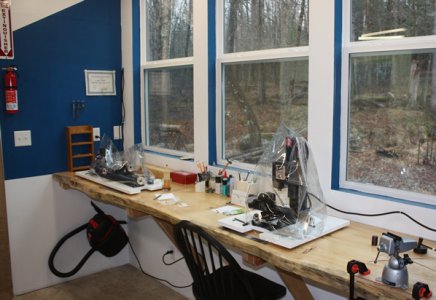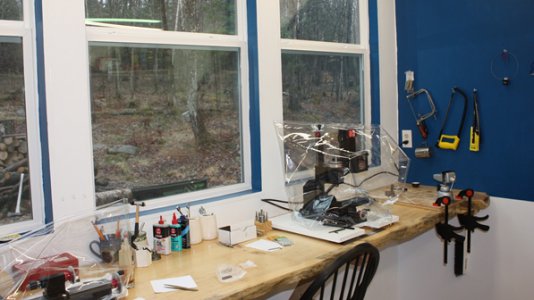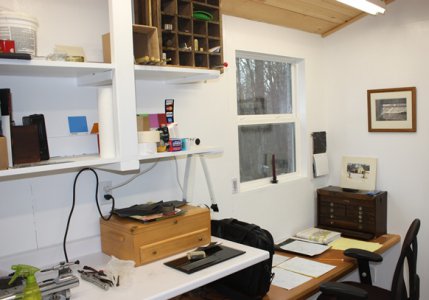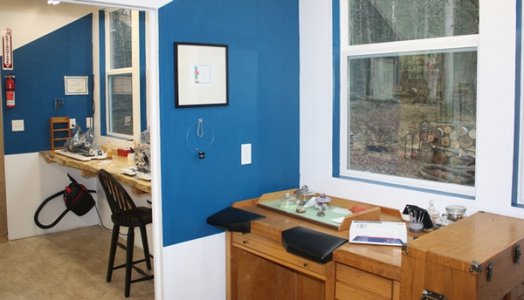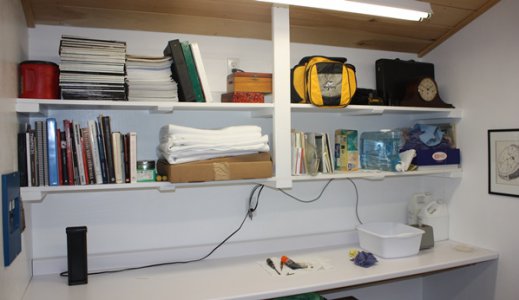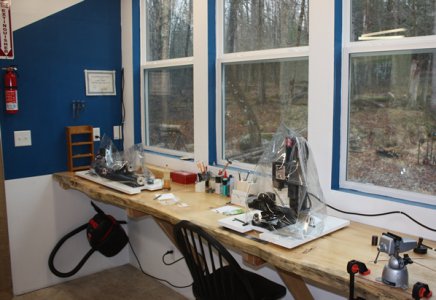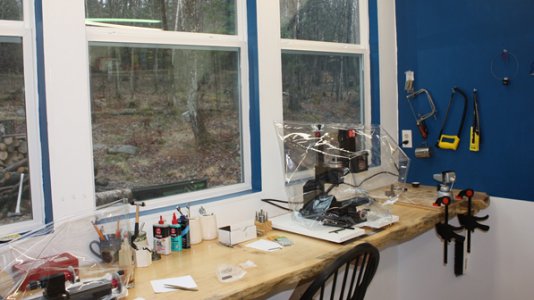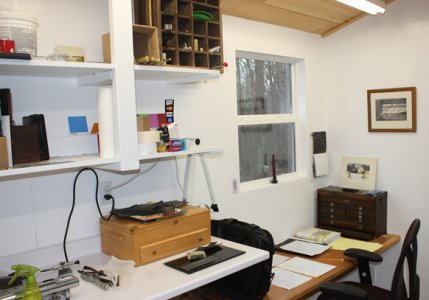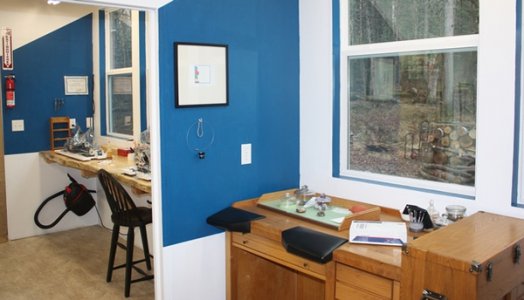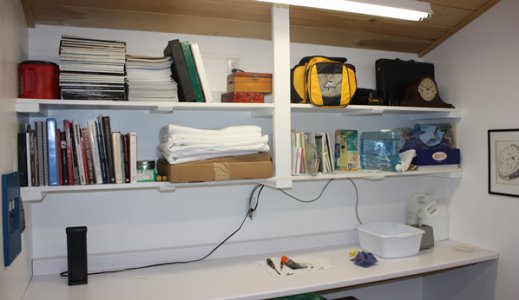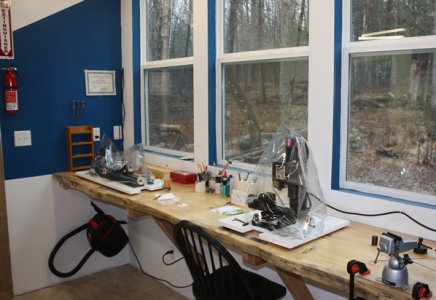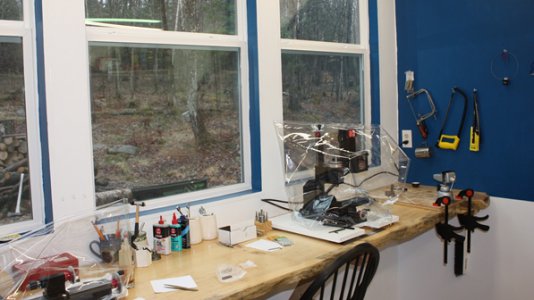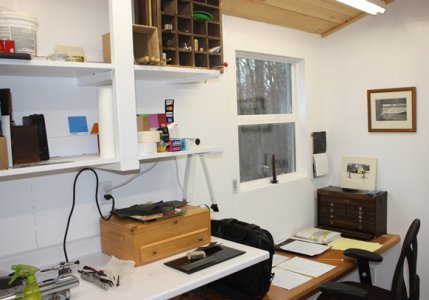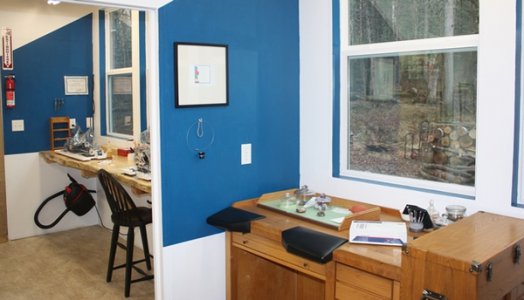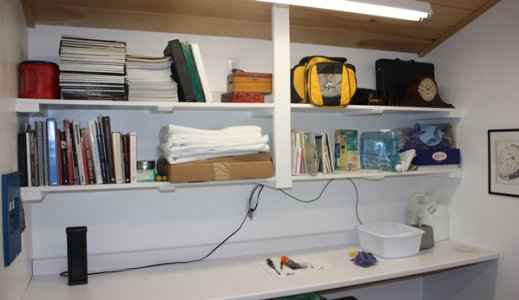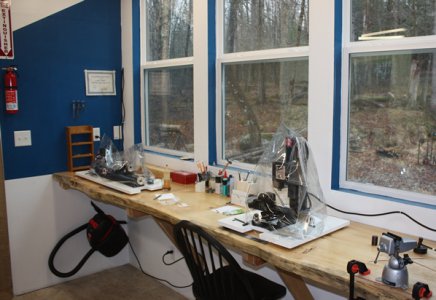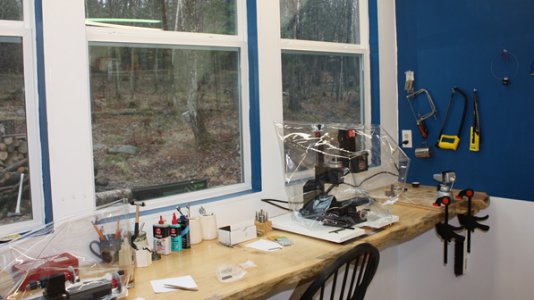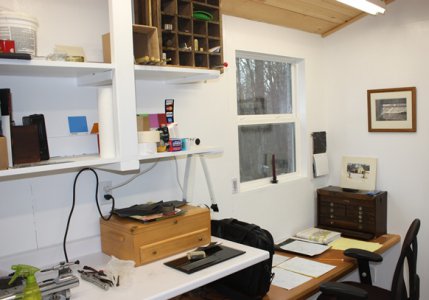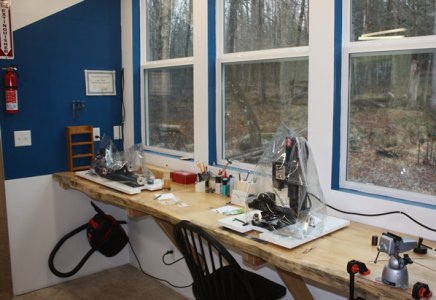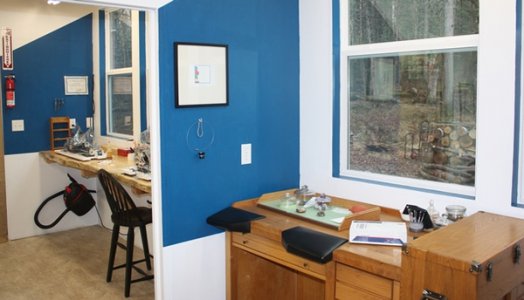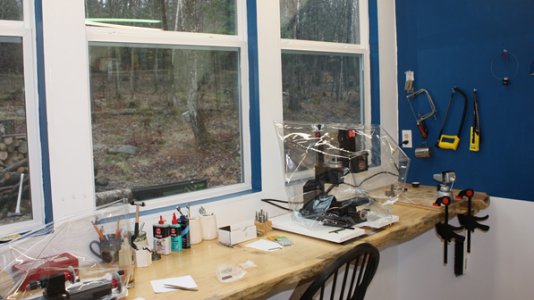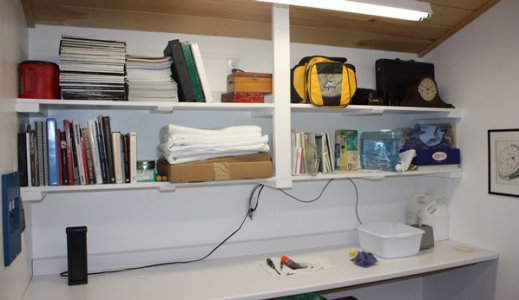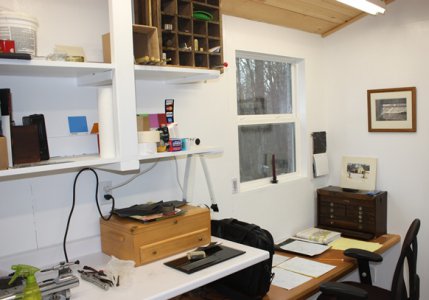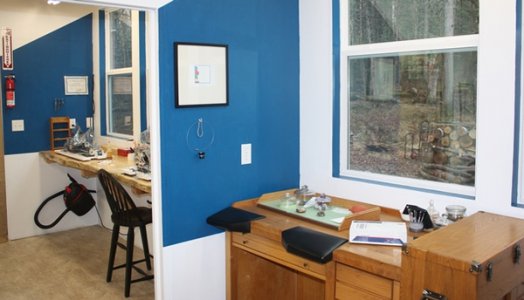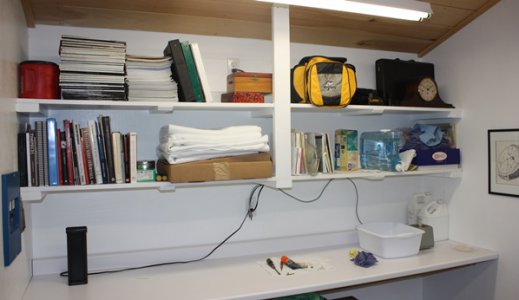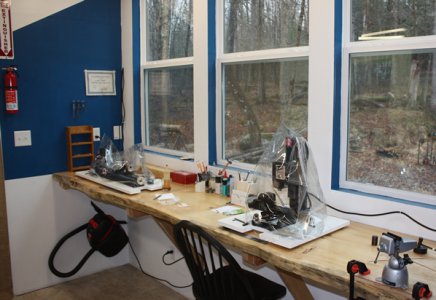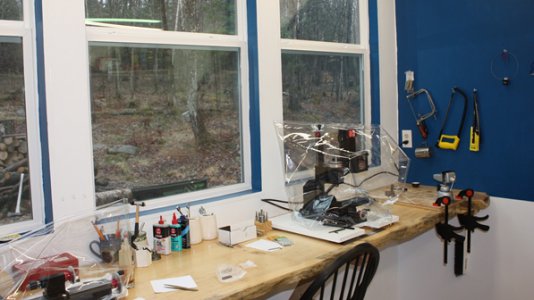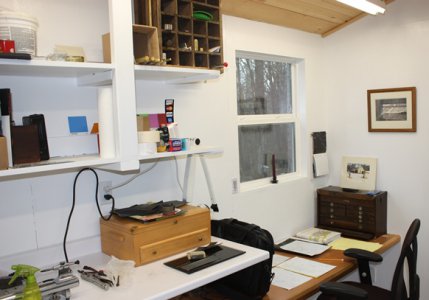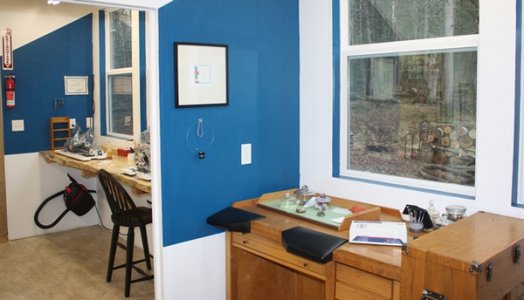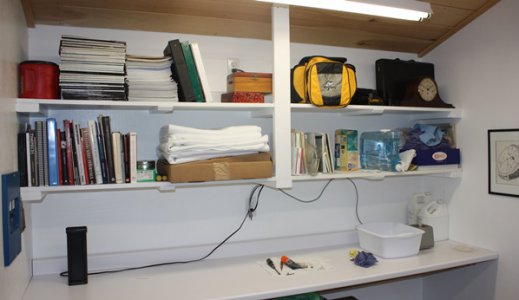Some additional details you workshop geeks might enjoy:
I did the electric wiring myself--I even dug the 150' trench for the feed as well. The blue electric panel you can see in the last picture above is a subpanel of our house's main panel (hence the trench from the house). It has two 20A circuits, one for the front wall (includes the main bench), one for the back wall (polishing, timing, cleaning, etc). There's a separate 15A circuit for the overhead lights. If you trip a breaker with a tool at the bench, the lights do NOT go out. This is important!
There's heavy 8 gauge wire already in the walls from the shop panel (which has room for a 220V breaker) to 2 outlets in the manufacturing room: 1 on the main bench and one in the corner where any large equipment would go. There's no circuit breaker or outlets installed yet because I have no 220V equipment so why spend the money, but it's a simple trip to the hardware store to get some big outlets up and running.
I have a simple portable electric heater set to 50* which keeps it above freezing all winter. There's no plumbing, just portable water jugs and a dishpan, so I can let it freeze, but I use it often enough to justify keeping it at working temps (above 40).
The flooring is the most recent addition. It is very thick, heavy vinyl and the entire shop (both rooms) is a single piece. I had it professionally installed (about $4/sq.ft., $2 each for material & labor) because keeping it seamless was tricky. This was the only step of the workshop construction I didn't do with my own hands.
